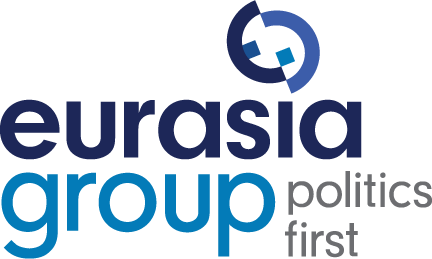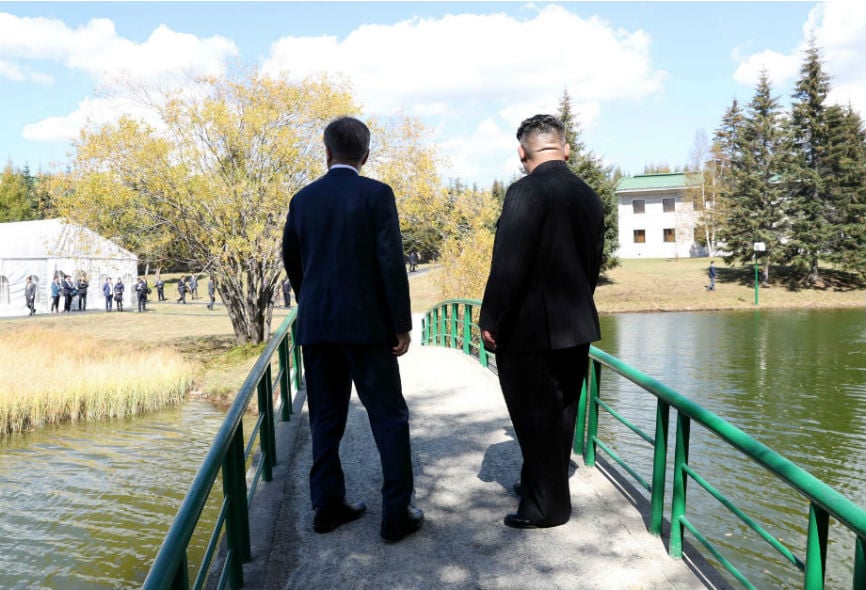
 North Korean leader Kim Jong Un and South Korean President Moon Jae-in talk while taking a walk at Samjiyon Guesthouse in Ryanggang province, North Korea, September 20, 2018. Pyeongyang Press Corps/Pool via REUTERS
North Korean leader Kim Jong Un and South Korean President Moon Jae-in talk while taking a walk at Samjiyon Guesthouse in Ryanggang province, North Korea, September 20, 2018. Pyeongyang Press Corps/Pool via REUTERS
North Korean leader Kim Jong-Un and South Korean President Moon Jae-In agreed on a joint declaration on the future of the Korean peninsula last week after their third summit — including the intent to make it a “land of peace free from nuclear weapons and nuclear threats”. Unfortunately, we still have many more questions than answers. Here are five of them:
Three months after the Trump-Kim summit in Singapore, we still don't know how Kim Jong-un defines this concept. Does it mean complete, verifiable, and irreversible denuclearization (or “CVID”) of North Korea's 60-some nuclear weapons? That's what the U.S. State Department said after Secretary of State Mike Pompeo was sworn into office this past spring. But President Trump seemed content to accept much less at his Singapore summit meeting with Kim in June.
Kim was quick to seize that opening, which he did by returning the remains of over fifty American service members who died during the Korean War. He also opted not to display ICBMs during North Korea's 70th anniversary military celebration in September. That was just enough to make sure Kim's talks with South Korea and the U.S. didn't fall apart… but not much beyond that. Last week's summit hasn't added much clarity, but enough of the principals are politically invested in the process to punt this question until absolutely necessary.
Meanwhile, China—North Korea's benefactor, its main trading partner and link to the outside world—has spent the last few months locked in an intensifying trade war with the U.S. On Sept. 24, Trump imposed tariffs on $200 billion in imports from China, after having already imposed tariffs on $50 billion over July and August. He has also threatened tariffs on another $267 billion, which would effectively cover all U.S. imports from China. Beijing has retaliated with tariffs on $110 billion (once its additional tariffs kick-in) in imports from the U.S., and will increasingly look for creative ways to create pain for U.S. firms.
Could North Korea be one of those pressure points? Beijing won't actively thwart denuclearization talks just to gain leverage with the U.S. on trade. That would invite Trump to impose sanctions on China and even to re-consider military options to resolve the conflict. But Beijing can dial up or dial down its level of cooperation, and the increasingly tense relationship with Washington doesn't make Chinese leaders inclined to help the U.S. Chinese President Xi Jinping will continue to look for ways to demonstrate to Trump that any path toward a lasting agreement with North Korea must run through Beijing.
Then there's the South Korean side of the equation. President Moon's approval rating is hovering at 50 percent, which doesn't sound that bad until you remember he left his first summit with Kim with an 83 percent favorability rating. But while the rest of the world remains fixated on the progress of the nuclear talks, South Koreans are also focused on their daily lives. Unfortunately, housing prices have surged, the unemployment level is at its highest level in nearly a decade, and the Moon administration misfired with a minimum wage hike over the summer.
Moon's political capital has been critical in advancing nuclear talks to their current point, and his persistence in engaging with Kim in good faith has been one of the few certainties in a process filled with vague statements and second-guessing. But from the perspective of South Korean domestic politics, Moon's political capital has taken a plunge. How far can a Trump-Kim detente progress with a politically weakened Moon driving developments?
More than a year and a half into Trump's presidency, we still don't know for certain how Trump's mounting domestic problems translate into foreign policy. Will he channel his defiance into aggressive posturing as he currently seems to be doing with China? Or will the prospect of a signature legacy achievement make Trump more likely to play ball with Kim? We're about to find out.